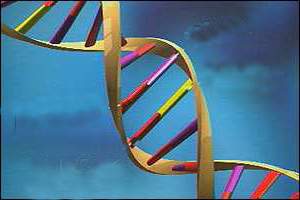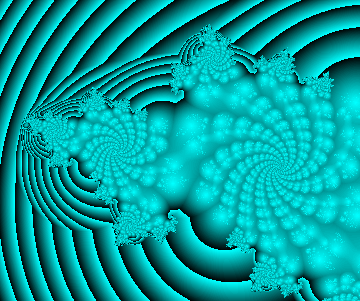
GEOG 581: Cartography Design

![]()
![]()
Session ONE
![]()
Group Project Instruction: (group-project.htm)
![]()
How Maps are Understood?
(MacEachren, Chapter Four).
What we see --> what we understood? (Does it make Sense?)
Knowledge Schemata (Forms): Propositional, Image, and event schemata.
Mental Categories:
(Classes: Male / Female), Price: expensive / cheap, (High / Medium / Low).
Shopping places -- Buy a GPS device. where? (Albersons? or BestBuy? or Target?)
Classical Approach:
| Map Categories: Land use categories: residential, industry, business areas, etc. | |
| Classification Methods: Natural break, equal interval (lab-1). --> Optimal Classification procedures. | |
| Basic tenets: 1). Categories are like containers. (with things either inside or outside), 2). Individual things are assumed to be in the same category if and only if they have certain properties in common. | |
| Natural categories exists. |
Empirical Evidence:
| individual members are more or less representative of the category. (not 100%) | |
| Category membership is determined not by a match to a fixed set of properties, but by similarity to a prototype representing the most typical category member. |
Alternative: Prototype Effects:
| Prototype: an abstract mental concepts of a typical member of a category. | |
| Collections of features. | |
| Fruit (Apple, Orange, Banana..) vs. Vegetables (Tomato ? which category?) | |
| Examplars | |
| Features are not expected to be common to all category members. | |
| probabilistic model: to establish the relative "goodness" of entities as category members. | |
| "Maps" as a category. |
(Republicans vs. Democrats)
Alternative: Family Resemblance
| Game as a category ([video game] vs. [Who wants to be a Millionaire]?) | |
| Categories are defined not by "common properties", but by "family resemblance". | |
| Closer members in a family tend to share more features. | |
| One entity links to multiple categories. | |
| Category members can share NO properties. (but similar to some central prototype... example: Jenks' optimal categorization scheme). | |
Alternative: Fuzzy Categories
| Some categories appear to have fuzzy boundaries (like "map") | |
| Category structuring appears to be highly dynamic and context-dependent. | |
| map of DNA, map of fractals... | |

 | |
| Fuzzy set theory (Zadeh, 1965). | |
| http://www.cs.bris.ac.uk/home/tr1690/documentation/fuzzy_clustering_initial_report/node10.html |
Alternative: Radial Category
| http://www.linguistics.ucsb.edu/faculty/cumming/ling50/radial_categories.htm (nice examples) | |
| Radial categories have a clearly defined center or prototype. | |
| Non-central members are not predicable from prototypes, but motivated by family resemblances to them. |
Categories are organized hierarchically.
Basic Level Categories:
Basic-level categories are the most general categories for which we can form a single image.
Basic-level categories are basic in at least four respects:
1. perception: highest level.
2. function: foundational roles.
3. communication: shortest, most common used words.
4. Knowledge organization: most of our knowledge is organized.
Knowledge Representation
| http://medg.lcs.mit.edu/ftp/psz/k-rep.html | |
| http://www.aaai.org/AITopics/html/repr.html |
How knowledge is organized?
| Propositional representation (declarative): all knowledge exists as conceptual propositions: static representation -- knowledge about objects, events etc. and their relationships and states given. Propositional knowledge or declarative knowledge is knowledge that some proposition is either true or false. "Earth is flat" (False), "People need food" (True). | |
| Analogical representation: similarity, resemblance, and correspondence (Knowledge tree) Car --> SUV, Minivan, sports car, etc. | |
| Procedural representation: control information necessary to use the
knowledge is embedded in the knowledge itself. e.g. how to find
relevant facts, make inferences etc. Requires an interpreter to
follow instructions specified in knowledge.
Procedural knowledge about solving problems differs from propositional knowledge about problem solving. For example, in some legal systems, this knowledge or know-how has been considered the intellectual property of a company, and can transferred when that company is purchased. |
Propositional Schemata:
Image (analog) Schemata: provide a format for encoding information from vision and language simultaneously. Gestalt perception.
Event Schemata (Scripts and Plans): scripts are structures that include variables, requirements about what can fill the variables, and relations among them.
Map Schemata:
"Human ability to understand and conceptualize about the world around us (including the ability to make concrete visual depictions of space in the form of maps and to interpret those made by others) are grounded in fundamental principles of human-environment interaction." (P. 194).
P. 198: A general map schema: (MacEarchren)
1. position on a map is linked to position in space via some coordinate systems.
2. the map space represents a geographic space within some size range.
3. the space depicted is continuous and hierarchical structured ...
4. points, lines , area objects exist in this space and are represented in the schema as point, lines, and area.....
5. graphic primitives linked to these variables represent the category of point, line, area or volume object.
6. ...
7. ....
Adults make assumptions about the abstractness of metaphorical mapping used that do not always match those intended by map authors.
We can manipulate our map design to act as a catalyst for specific schemata.
What is your Map Schema?
![]()
Multiple Representation:
Paper maps vs. Web-based Maps.
Any different in the establishment of Map Schemata?
![]()
Session TWO
![]()
Please use on-line forum to answer the following questions (5 points) (LAST Week)
|
Explain what is "visual hierarchy" and use your "sketch map" to describe how many levels in your map. Which map element is the most important one? which one is the least important one? WHY? |
|
The color inkject printer in the lab is Calcomp (CCP) TechJet Color 5336. Please write a paragraph to introduce the specification of this printer (resolution-DPI, media type, technical features, etc.) and their major functions and advantages. (You can try web search engine or refer to the instruction manual next to the printer). |
|
Now, let's assume that you want to replace the printer in our LAB. Please select a new color printer from the current market. Specify the model, price, major functions and the rationales behind your selection. |
![]()
Web-powered by: MAP.SDSU.EDU